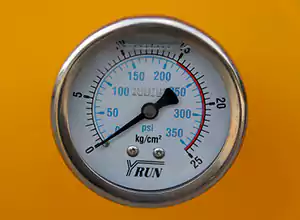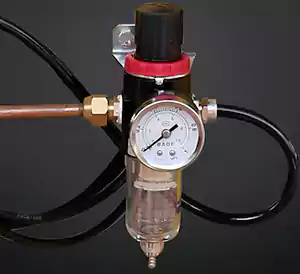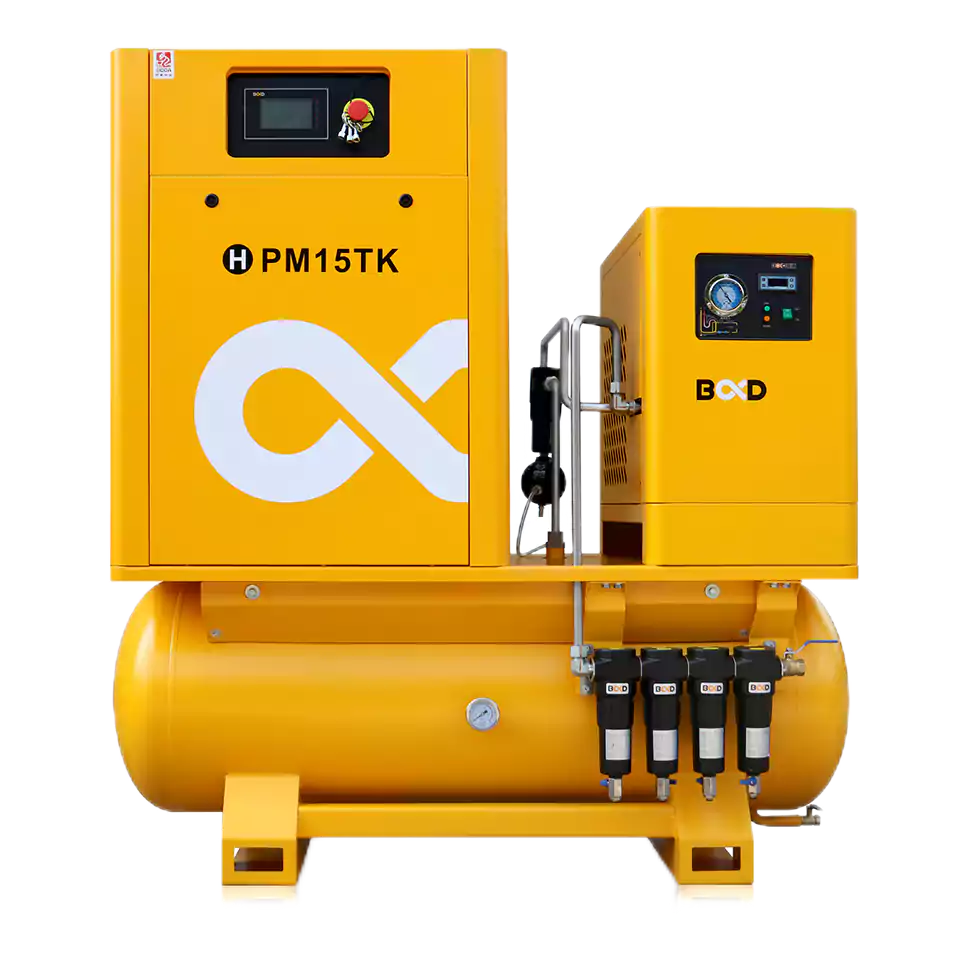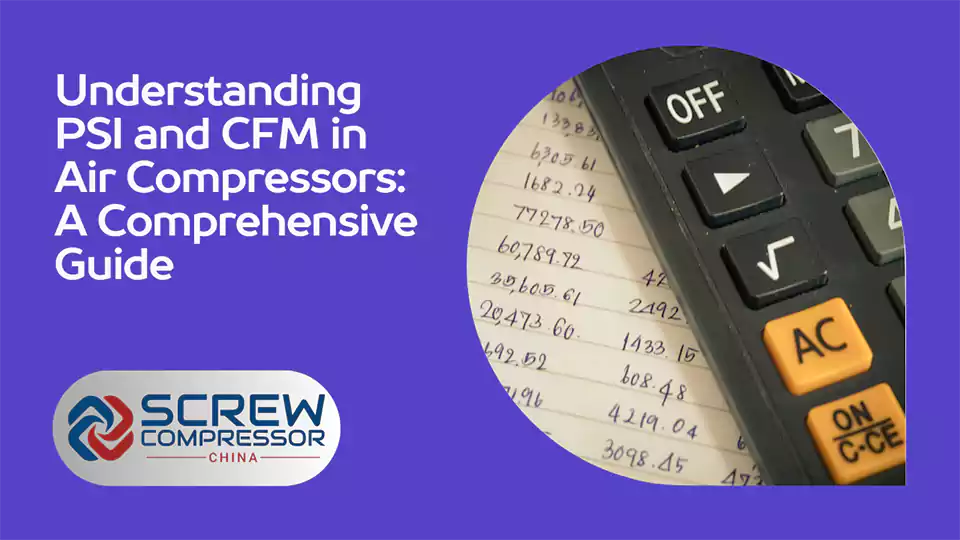Air compressors are essential tools in various industries, powering everything from pneumatic equipment to HVAC systems. Two critical performance specifications, PSI (Pounds per Square Inch) and CFM (Cubic Feet per Minute), are pivotal in understanding an air compressor’s capabilities. This guide delves into the meanings of PSI and CFM, their relationship, and how to choose the right air compressor for your needs.
PSI and CFM Explained
What is PSI?
PSI measures the pressure exerted by the compressed air within a square inch area. It indicates the force the air compressor can deliver, which is crucial for the effective operation of air-powered tools. Higher PSI values mean the air compressor can deliver more force, making it suitable for tasks requiring high energy.
PSI is a key factor in determining an air compressor’s ability to power tools and equipment. Most air tools have a minimum PSI requirement to function properly. For example, a pneumatic nail gun may require 70-90 PSI to operate effectively, while a sandblaster might need 90-100 PSI.
It’s essential to match your air compressor’s PSI output to the requirements of your tools to ensure optimal performance and avoid damage. In addition to meeting tool requirements, higher PSI can also improve efficiency in certain applications. For instance, in automotive painting, higher PSI can result in finer atomization of the paint, leading to a smoother, more even finish. However, it’s crucial not to exceed the maximum PSI rating of your tools, as this can cause wear and tear or even dangerous malfunctions.

What is CFM?
CFM quantifies the volume of air the compressor can move in a minute. It is a measure of airflow efficiency, with higher CFM values indicating a greater capacity to power multiple tools simultaneously or a single tool that requires a high volume of air to operate.
Understanding CFM is essential for ensuring your air compressor can meet the demands of your tools without interruption. CFM is equally important as PSI when selecting an air compressor. Each air tool has a specific CFM requirement, which represents the volume of air it consumes during operation.
For example, a 1/2-inch impact wrench might require 4-5 CFM at 90 PSI, while a die grinder could need 8-10 CFM at the same pressure. To determine the total CFM your air compressor should provide, add up the CFM requirements of all the tools you plan to use simultaneously. It’s also a good idea to add a safety margin of around 30% to account for any leaks or inefficiencies in your compressed air system. This will ensure that your compressor can keep up with demand without putting undue strain on the system.

The Relationship Between PSI and CFM
The relationship between PSI and CFM is akin to the water flow through a garden hose, as described on VMAC. When you narrow the hose’s end, the water shoots out with more force (PSI), but the amount (CFM) remains constant.
Similarly, air compressors need to balance PSI and CFM to operate efficiently. Tools require a certain PSI to run, but without adequate CFM, they won’t perform optimally. To better understand the relationship between PSI and CFM, consider this analogy: Imagine a tunnel with wind blowing through it. As the tunnel gets smaller, the wind speed increases (higher PSI), but the volume of air passing through remains the same (constant CFM). This illustrates how increasing pressure affects airflow in a compressed air system.
It’s crucial to find the right balance between PSI and CFM for your specific application. If you have high PSI but insufficient CFM, your tools may not receive enough air volume to operate continuously. Conversely, if you have ample CFM but low PSI, your tools may not have the necessary force to perform their tasks effectively. Striking the optimal balance ensures your compressed air system runs efficiently and your tools function at their best.
Choosing the Right Air Compressor
Selecting the appropriate air compressor involves more than matching the PSI and CFM ratings of your tools. You must also consider the type of air compressor (rotary screw or reciprocating), the presence of an air receiver tank, and the specific requirements of your applications.
For detailed insights, explore resources like Atlas Copco’s blog on air compressor measurements and The Compressed Air Blog for a deeper understanding of PSI, CFM, and HP. When choosing an air compressor, start by listing all the air tools you plan to use and their respective PSI and CFM requirements. This will give you a baseline for the minimum specifications your compressor should meet.
Next, consider the type of work you’ll be doing and the environment in which you’ll be operating the compressor. For intermittent use or small-scale projects, a reciprocating air compressor with an air receiver tank may suffice. These compressors build up pressure in the tank, allowing for short bursts of high-CFM air delivery.
However, if you need a continuous supply of compressed air for industrial applications or heavy-duty tasks, a rotary screw compressor is likely a better choice. These compressors provide a steady flow of air at high CFM rates without the need for a large storage tank.

Other factors to consider include noise levels, portability, energy efficiency, and maintenance requirements. Consult with compressed air experts or suppliers to help determine the best air compressor for your specific needs.
Frequently Asked Questions
Q1: Can I use an air compressor with higher CFM than required by my tools?
Yes, using an air compressor with a higher CFM than your tools require ensures they run efficiently. However, significantly exceeding the required CFM can lead to unnecessary energy consumption.
Q2: Is it better to have a higher PSI or CFM for automotive tools?
Automotive tools typically require a balance of both. High PSI is needed for impact and ratcheting tools, while spray painting and sandblasting equipment demand high CFM. Check each tool’s specifications for guidance.
Q3: Can I adjust the PSI and CFM on my air compressor?
Most air compressors allow you to adjust the PSI, but CFM is a fixed characteristic based on the compressor’s design and power. Always refer to the manufacturer’s instructions for adjustments.
This comprehensive guide on PSI and CFM in air compressors underscores the importance of understanding these metrics to select the right compressor for your needs. Whether for industrial applications or DIY projects, matching your tools’ requirements with your compressor’s capabilities is crucial for optimal performance. For further exploration, consider reading about the difference between PSI and CFM or how to choose a mobile air compressor on Rolair’s blog.
